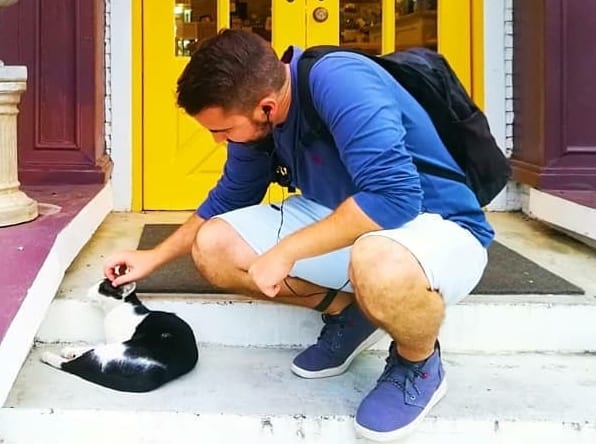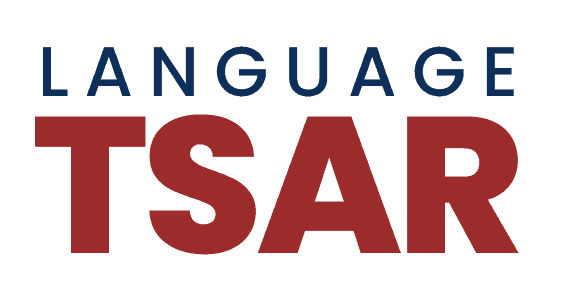While travelling and learning an official language of a country you should also appreciate that it may not be the main language depending on the region you’re in.
In this sense Spain is an interesting example. Even if Spanish is the only official language on a national level, there are plenty of regional languages, i.e., Aranese, Basque, Catalan and Galician.
And the fact that in some regions these languages are the majority native tongues of its inhabitants means that they are worth being learnt and recognised.
In this article, I will concentrate on Catalan, a co-official language in the Spanish regions of Catalonia, Valencia, the Balearic Islands and the official language of Andorra. Moreover, outside of Spain, the Catalan language is spoken as a minority language in the Sardinian city of Alghero (Italy) and in the French region of Pyrénées-Orientales.
Are Catalan and Spanish the same language?
Spanish and Catalan are Western-Romance languages, however, they come from two different “branches”. Spanish comes from the Ibero-Romance branch while Catalan belongs to the Gallo-Romance branch, which at the same time, was divided into two different branches, French and Occitan-Romance.
While Catalan is spoken by about 11 million people, mostly in the north-east and east of Spain, while Spanish is spoken by around 400 million people as a first langauge mainly in Latin America and Spain but also in Africa (Equatorial Guinea).
Spanish is today an official language in:
Spain, Argentina, Bolivia, Chile, Colombia, Costa Rica, Cuba, Dominican Republic, Ecuador, El Salvador, Equatorial Guinea, Guatemala, Honduras, Mexico, Nicaragua, Panama, Paraguay, Peru, Uruguay and Venezuela.
Catalan is recognized as a separate language to Spanish (i.e., it’s not a dialect of Spanish) and having read a bit in Catalan, I can definitely agree with this categorization.
Catalan has a lot of similarities with both French and Spanish but to me having studied it, Catalan is clearly distinct from both other these other Romance languages and easily recognizable as such.
The amazing party island of Ibiza also a place where the Catalan language has a strong local presence
So what are the most significant differences between Spanish and Catalan?
1. Periphrastic preterite – The Catalan past tense is really interesting and unique. It has a past tense like no other Romance language. It is built from the present form of the auxiliary verb anar (to go) and the infinitive form of the verb. So “I sang” is vaig cantar, where cantar is “to sing” and vaig is literally “I go” but together it doesn’t mean “I am going to sing”, but “I sang”. On the other hand vaig a cantar does mean “I am going to sing”. See how just a one-letter word a can make a huge difference!?!
2. The pronoun en, which means “of that (thing that was previously mentioned)”. There are similar pronouns in French (en) and Italian (ne) but this does not exist at all in Spanish. For example: Tenim cinc tomàquets. En menjaré dos. in Catalan which translates as “We have five tomatoes. I’ll eat two of them.”
3. Affricates: /ts, dz, tS, dZ/ – these are used in Catalan but not in Spanish. Some examples are: dotze (“twelve”) which is doce in Spanish, cotxe (“car”) is coche in Spanish and metge (“doctor”) is médico in Spanish.
Here I am in Andorra la Vella, the capital of the only country in the world where Catalan is the official national language
So why so much fuss about speaking Catalan or Spanish in Spain?
The history of Catalonia is a turbulent one which has it win and lose degrees of autonomy in the last 1,000 years. Having visited the region many times, Catalonia growth has a strong regional identity wedded to their unique culture, language and institutions.
In 1936, the dictatorship of Francisco Franco completely abolished regional autonomy in Spain with the aim of homogenizing the country. After his death in 1975 and the return of Spain to democracy, Catalonia has regained its lost autonomy within Spain.
Today Catalonia is an autonomous region and the richest part of Spain and there is a campaign the right to hold a referendum on full independence from Spain. Whether Catalonia ultimately becomes an independent nation or remain part of Spain, its strong regional character is likely to stay.
Therefore, it’s important to be cognizant of these local sensibilities when traveling in Catalonia. Spanish is widely spoken in Barcelona but in more provincial towns, Catalan may be the dominant language. Addressing people in Catalan, as opposed to Spanish, is highly appreciated in my experience.
Catalan has its own unique charm as a language with 2 distinct varieties in Catalonia and Valencia. I learnt my Catalan with a teacher from Valencia and so am quite partial to the southern version of the language.
If you are considering visiting Catalonia, I highly encourage you to invest some time and learn at least the basics of Catalan as it will turbocharge your contact with local people as it has for me on my trips there.
Use the following 3 tips to identify whether it is Catalan or Spanish while reading:
- Catalan leaves out the vowels -o, -a, or -e that are commonly used in Spanish; “cat” – “gato” in Spanish and “gat” in Catalan;
- Catalan drops ‘n’s in many nouns, e.g., formación is formació in Catalan and catalán is català in Catalan;
- Catalan swaps o for at in verb ending, like ocupado, which becomes ocupat in Catalan;
- Catalan uses “ny” which corresponds to Spanish “ñ”, Portuguese “nh”, or French/Italian “gn”;
- Catalan uses both grave and acute accents, as á, ò, è: anglès, francès;
- Catalan sometimes uses the middle dot between two L letters, for example in the word paral·lel which is does not exist in Spanish.
Have you learnt or do you speak Catalan or Spanish? I really hope it was useful for you! Do not hesitate to write your thoughts and experiences with these 2 different languages of Spain in the comments section below
Versió en català!
¡Versión en español!

Michael has been an avid language learner and traveler for many years. His goal with LanguageTsar is to discover the most fun and effective ways to learn a language. He is currently learning Japanese, French and Indonesian.



Comments are closed.